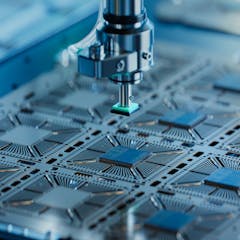
Articles on Manufacturing
Displaying 1 - 20 of 299 articles

Ballooning inventories are to blame for much of the fashion’s sector carbon footprint. Could on-demand production solve such problems?

The policy will see Australia join the great ‘geoeconomic game’ reshaping international supply chains. But it won’t be without new risks for doing business.

What would it mean to bring solar manufacturing back on shore in Australia?

Global semiconductor manufacturing is already under geopolitical stress, but climate change ups the ante.

In an era of transformation, manufacturing still matters.

The effects of AI’s growth on global security could be difficult to predict.

India needs to follow a path akin to China’s to find answers to its job woes.

Boeing is under increased public and government scrutiny in the wake of dangerous events that have people worried about the safety of air travel.

The policy is the latest strategy to grow Ghana’s weak industrial base.

Smart water management isn’t just good for the earth. It’s good for business.

The popularity of unconventional luxury brand collaborations with young adult Chinese consumers opens potential opportunities for local producers of high end goods.

Despite significant financial and political pressures, many companies are still not moving their production and manufacturing out of China. Why not?

Two glass researchers explain how glass is made, the unique properties of glass and how those properties have allowed it to be a useful material to humans for thousands of years.

Ruto’s administration continues to borrow, just like the previous regime.

A heritage-listed hat factory has burned down in Surry Hills. The suburb was once a hub of fashion manufacturing.

Ten years after the collapse at Rana Plaza in Bangladesh, the garment industry’s deadliest disaster, reforms are incomplete. The opaqueness of today’s complex supply chain is part of the problem.

Soaring electric vehicle production is giving new life to old manufacturing plants that were all but written off in the United States. Australia is also in a position to revive its carmaking industry.

Companies like it when your phone breaks and you have to buy another. But we’d all save a lot of money if we could actually repair the things we purchased.

To ensure the ‘complete transparency’ promised by Anthony Albanese, the new National Reconstruction Fund can learn from the Reserve Bank of Australia.

For the kind of money the federal and Ontario governments probably spent for a Volkswagen EV battery plant in southwestern Ontario, Canada might have been able to launch its own EV maker.

